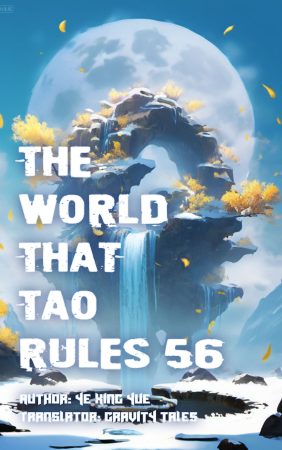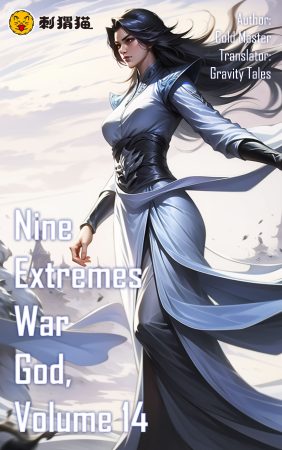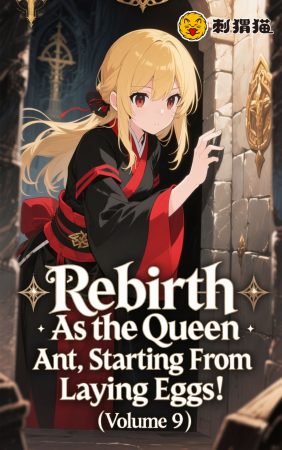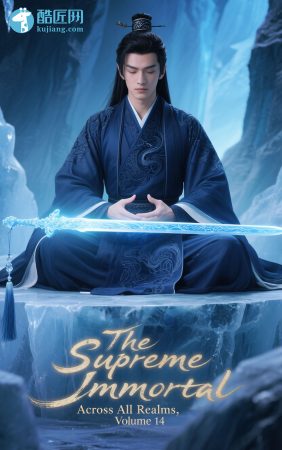Chapter 982
Our Discord Server: https://discord.gg/PazjBDkTmW
You can buy coins here to unlock advanced chapters: https://gravitytales.com/coins-purchase-page/
Chapter 982 End of Volume Summary 3
The City of Extreme Evil has finally come to an end.
As usual, let me summarize this volume. If you don’t want to read it, feel free to skip it (jk).
Originally, this volume was planned to be around 500,000-600,000 words, but unknowingly, it expanded to nearly 750,000 words, becoming the longest volume so far.
It’s not that San Jiu wanted to pad the word count, but there was simply too much content to cover in this volume.
Entering the Human Circle, Night Curtain’s reunion, destroying divine authority, returning to Da Xia, training new recruits, Red Moon’s arrival, Mask’s fall, Shangxie’s destruction, High Heaven God’s demise, Heaven Court’s descent… All these elements seem unrelated but are actually interconnected, leading to Takama-ga-hara’s downfall under the schemes of the Time God and Da Xia God.
To simplify, San Jiu can summarize this volume’s core into two words: pioneers and inheritance.
Let’s first discuss pioneers.
So far, the most representative quality of “God Slayer” has been the Night Watchers’ sacrifice and protection. After two volumes of depicting this, San Jiu wanted to portray something different through the “Human Circle” setting.
A large portion of this volume takes place in the “Human Circle,” which is essentially a story of awakening, rebellion, sacrifice, and victory.
Yuri Kurotetsu, Amemiya Haruki, and the Yuri siblings are awakened ones who grew up under divine authority, and they are the pioneers who destroyed the old era and led the people of the “Human Circle” into a new age.
The wisdom, reflection, perseverance, and courage they possess represent a unique consciousness that differs from the Night Watchers but shines just as brightly.
This quality might not be as direct or passionate as the Night Watchers’, but San Jiu still wanted to write about it. It’s an experiment and a form of respect.
Second, inheritance.
As summarized at the end of the previous volume, the first volume’s core was “deities,” the second volume’s core was “humans can triumph over heaven,” represented by five human peak performers from ordinary professions.
This volume’s core is growth and inheritance.
You might have noticed that in this volume, those who truly shine are all from the younger generation.
Not gods, not human peak performers, but the new generation symbolizing hope and future – the “seeds” scattered by Ye Fan at the end of the previous volume.
Wu Xiangnan, Wang Mian, and Lin Qiye, three youths representing different special teams, carrying their respective missions, slaying the only deity within Takama-ga-hara.
Unlike Zhou Ping’s single-sword god-slaying in the previous volume, these three’s process of god-slaying was quite tortuous, because they’re young, because this is their growth, and growth is inevitably difficult and bumpy.
With Wu Xiangnan’s transformation, [Blue Rain] completely perished; as Wang Mian battled step by step with time, [Mask] didn’t completely vanish; [Night Curtain] inherited [Blue Rain]’s number and is rising strongly; meanwhile, in the new recruit training camp, young and hopeful seeds are slowly growing.
These four processes form a cycle.
This is inheritance.
After discussing this volume’s core content, let’s address some voices I’ve seen in the comments.
Well, the biggest concern is about power scaling being broken.
“…”
Actually, San Jiu is somewhat puzzled, (•ิ_•ิ
Looking through the comments, the concerns about power scaling mainly focus on several core issues. Let me briefly respond to them.
First, how could Qiye fight evenly with and even kill a “Klein” level Oracle in the “Human Circle”?
Lin Qiye’s own level was only at the “Sea” realm at that time, this is undisputed, but the key is… he had the Magatsukami blade!
Magatsukami blades are weapons that allow ordinary people to use powerful forces. Their combat power comes from the blade itself. It was previously described through Yuri Takashiro’s eyes that Yuri Kurotetsu was level 18 without the Magatsukami blade, but reached level 69 when wielding it.
Amemiya Haruki, Hoshimi Shota, Yuri Nae… they’re all ordinary people who could fight Oracles while wielding Magatsukami blades. For Qiye, who has “Sea” realm strength, defeating an Oracle while holding a Magatsukami blade isn’t difficult, especially considering that Oracles vary in strength and can’t be generalized.
Second is about the protagonist team’s extraordinary performance during the Chenlong Gate battle.
Looking carefully, the only truly extraordinary performances seem to be from Jiang Er and Lin Qiye.
Regarding Jiang Er, San Jiu mentioned when she first appeared that [Spirit Connection] can be used regardless of mental power level, its limitation being the target’s emotional fluctuations (Chapter 490). So Jiang Er could possess a “Klein” level “mysterious” beast for one second, seizing the opportunity to redirect its devastating attack to another “Klein” level beast nearby, instantly killing it.
This process has nothing to do with Jiang Er’s own level.
As for Lin Qiye… he indeed became overpowered after merging with the Magic God, but this power-up occurred under reasonable settings, and he only used it once in the entire third volume. Should this really count as broken power scaling?
Finally, there’s Wu Xiangnan, Wang Mian, and Qiye jointly killing Susanoo.
Honestly, with two divine artifacts, three forbidden spell formations, one human peak performer, one solar law, and Lin Qiye enhanced to god-level by the meditation cushion, this lineup killing an already dumbed-down, heavily injured Susanoo who lost the Kusanagi sword should be reasonable, right?
Moreover, the Kusanagi sword and [Divine Calamity] didn’t fall from the sky – the former was brought out from Takama-ga-hara by Qiye after nearly dying multiple times, the latter was the product of nine Magatsukami blades combining. Everything follows the plot progression, with only the meditation cushion left by Tianzun being somewhat external.
This process can’t be replicated or repeated.
Here, San Jiu wants to add that “God Slayer” was never a simple level-up-and-fight story, unlike traditional xianxia novels where after breakthrough, you only meet people of the same realm, fighting step by step with same-level opponents, then simply defeating someone one level higher.
From the beginning, this book’s power system has been diverse. You won’t only meet people of the protagonist’s level on the streets. When the protagonist was still at the “Cup” realm, he could encounter enemies at “Pool,” “River,” “Sea,” “Klein” or even god realm. He could fight a “Limitless” realm enemy or return to training camp to dominate rookie recruits.
If killing gods above one’s level counts as broken power scaling, then it would have been completely broken at the end of the first volume when Lin Qiye, carrying the Seraph’s miracle power, solo killed Loki’s avatar.
Perhaps there are some small fluctuations in power scaling details, but San Jiu believes we’re far from what could be called “broken.”
Lastly, about the Cthulhu issue.
At the end of the first volume, San Jiu already mentioned that because the book involves too many pantheons, it won’t completely follow original mythological power rankings, meaning there’s been a power level reshuffling.
The Cthulhu Mythos itself is an exaggerated fantasy story. If directly incorporated into the book as is, it would definitely cause problems, so San Jiu won’t write it like other Cthulhu novels do, but will make some changes while preserving its style and characteristics.
This applies to Indian mythology, Norse mythology, Da Xia mythology, and others as well.
So far, we’re past the halfway point of this book.
The upcoming volumes definitely won’t be as long as this one, and won’t have such extensive “Human Circle” content – at most it will exist as a minor side story. Starting from the next volume, we’ll begin the full-scale divine war.
Well, this concludes the summary of this volume.












